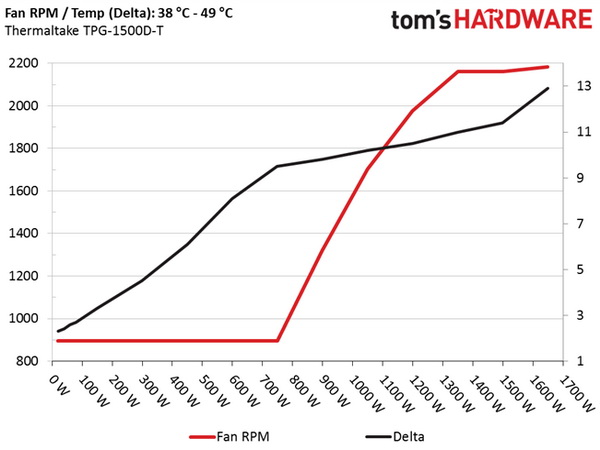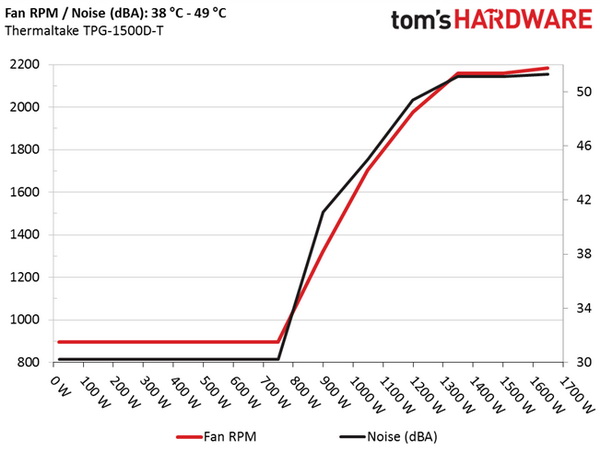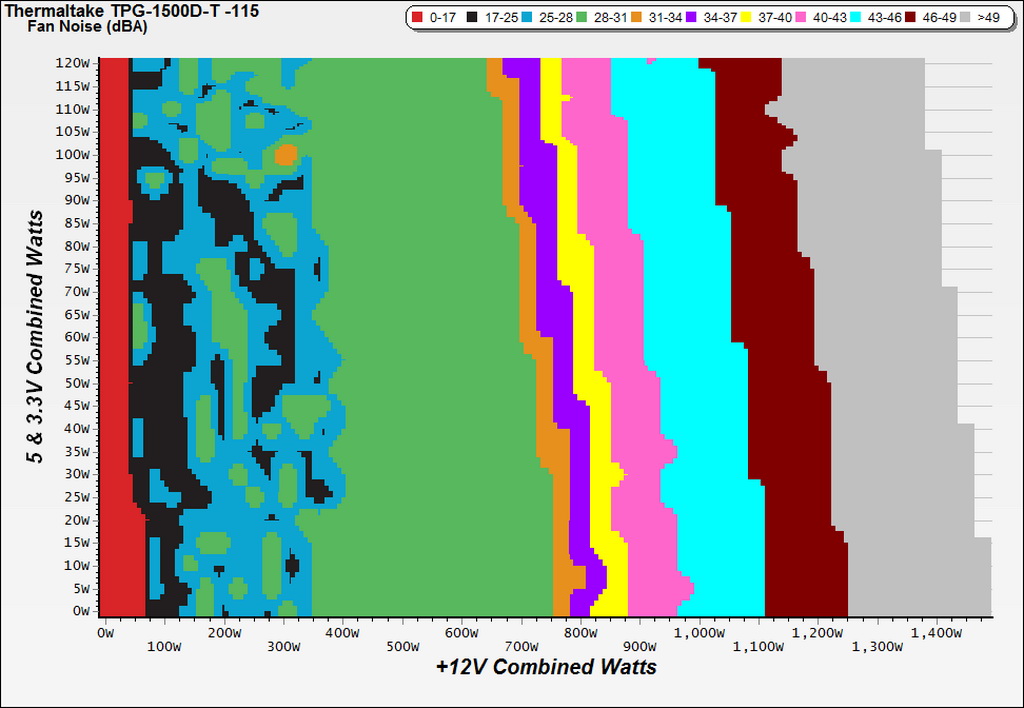Thermaltake Toughpower DPS G RGB 1500W PSU Review
Why you can trust Tom's Hardware
Efficiency, Temperature And Noise
Efficiency
Our efficiency testing procedure is detailed here.
Using the results from the previous page, we plotted a chart showing the TPG-1500D-T's efficiency at low loads, and loads from 10 to 110 percent of the PSU's maximum-rated capacity.

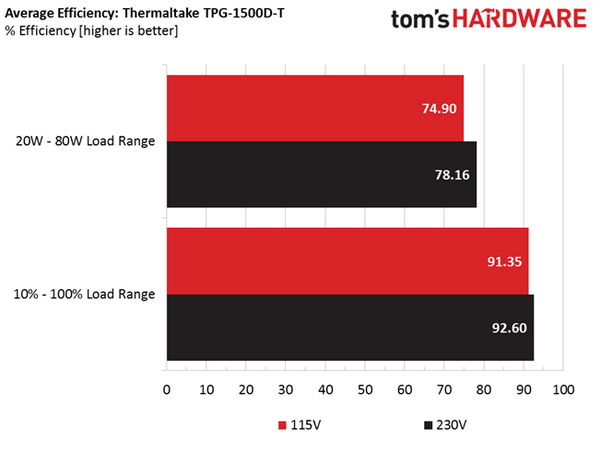
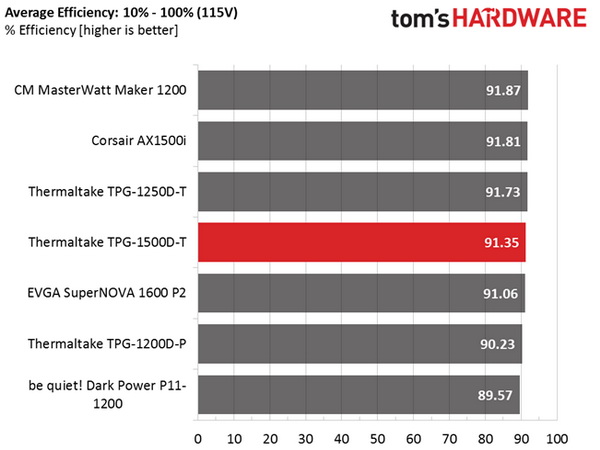
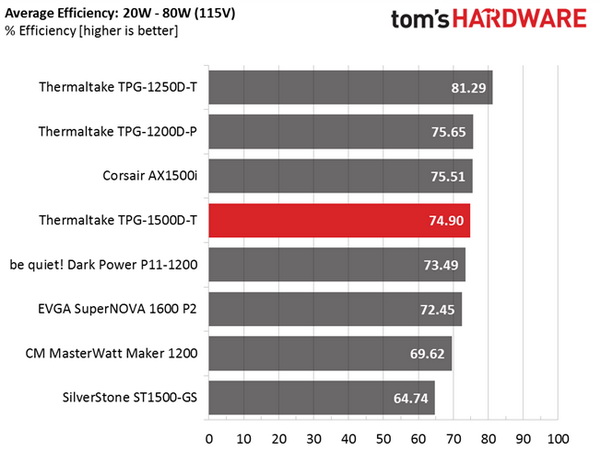
Compared to its smaller brother, the TPG-1500D-T is less efficient, and the similar-capacity (digital) Corsair AX1500i beats both of them. It's worth mentioning that the Platinum-rated EVGA 1600 P2 is pretty close to the 80 PLUS Titanium units, showing that either the Platinum Leadex platform has lots of potential or that the high-capacity Titanium platforms need more tuning. We believe that both apply.
Efficiency At Low Loads
In the following tests, we measure the TPG-1500D-T's efficiency at loads significantly lower than 10 percent of its maximum capacity (the lowest load the 80 PLUS standard measures). The loads we dialed were 20, 40, 60 and 80 W. This is important for representing when a PC is idle, with power-saving features turned on.
| Test # | 12V | 5V | 3.3V | 5VSB | DC/AC (Watts) | Efficiency | Fan Speed | Fan Noise | PF/AC Volts |
|---|---|---|---|---|---|---|---|---|---|
| 1 | 1.209A | 0.492A | 0.475A | 0.195A | 19.62 | 62.21% | 896 RPM | 30.2 dB(A) | 0.780 |
| 12.053V | 5.033V | 3.359V | 5.029V | 31.54 | 115.1V | ||||
| 2 | 2.446A | 0.991A | 0.982A | 0.395A | 39.74 | 73.91% | 896 RPM | 30.2 dB(A) | 0.866 |
| 12.051V | 5.031V | 3.356V | 5.023V | 53.77 | 115.1V | ||||
| 3 | 3.684A | 1.487A | 1.489A | 5.017A | 59.86 | 80.30% | 896 RPM | 30.2 dB(A) | 0.917 |
| 12.051V | 5.029V | 3.355V | 5.017V | 74.55 | 115.1V | ||||
| 4 | 4.913A | 1.985A | 1.965A | 0.794A | 79.75 | 83.19% | 896 RPM | 30.2 dB(A) | 0.931 |
| 12.050V | 5.028V | 3.353V | 5.011V | 95.86 | 115.1V |
Efficiency under light loads is decent, though not what we'd call worthy of a Titanium-rated unit. Very high capacity makes it hard to achieve good efficiency levels under minimal loads.
DPSApp Screenshots
You'll find screenshots of the DPSApp software below, which we took during under light loads.
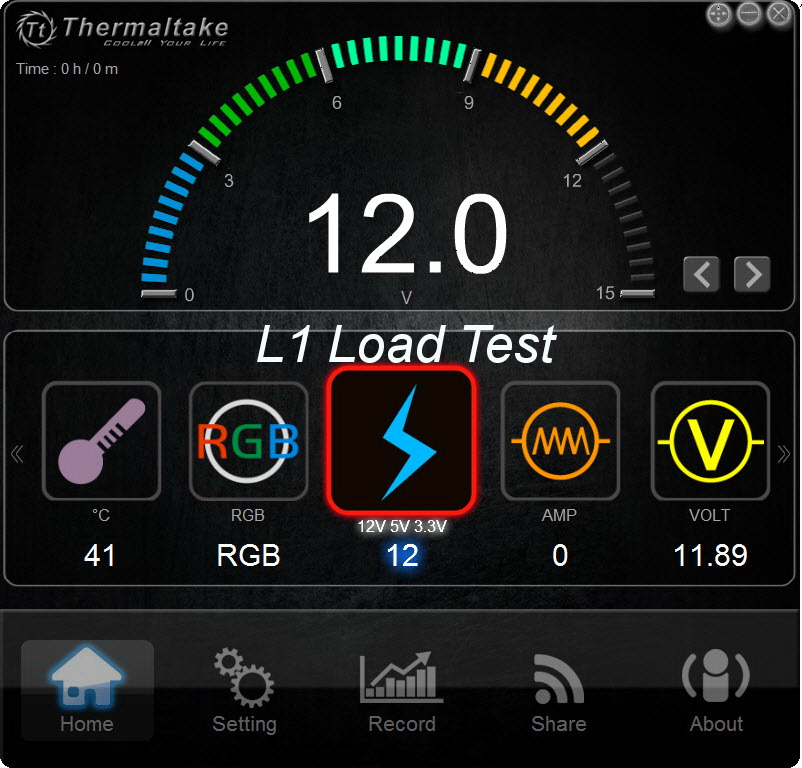
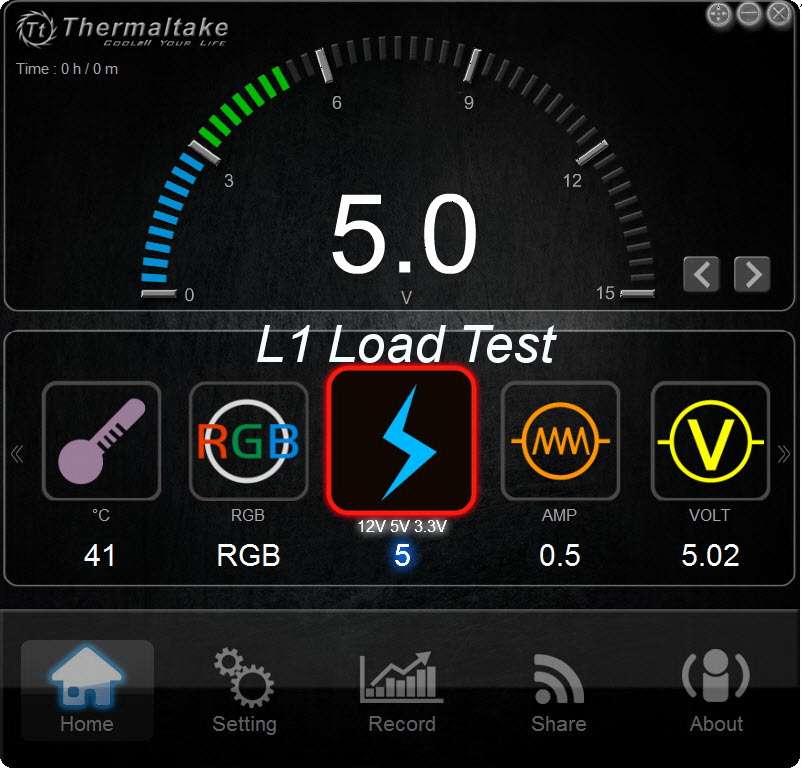

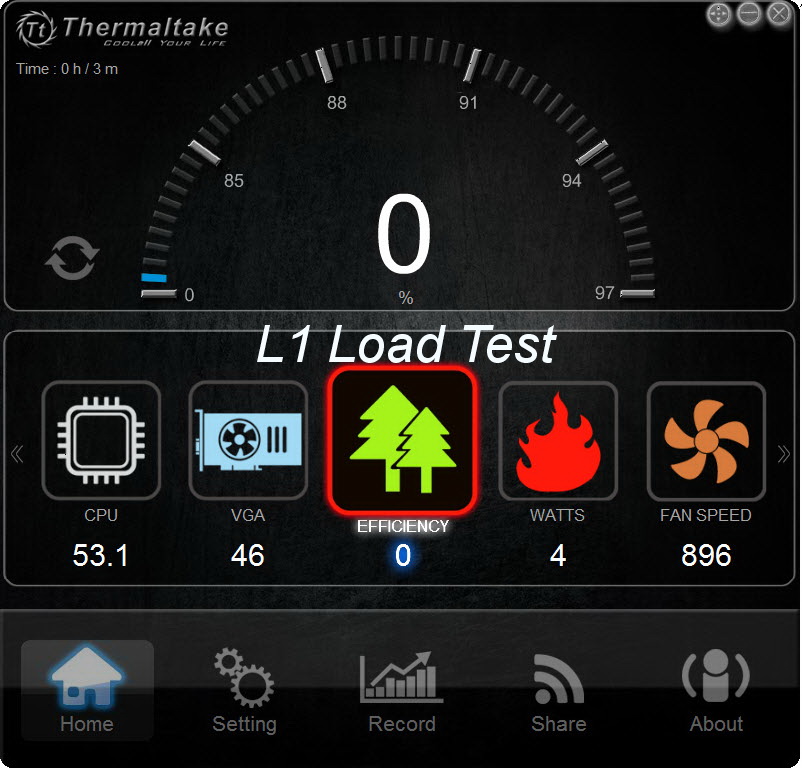
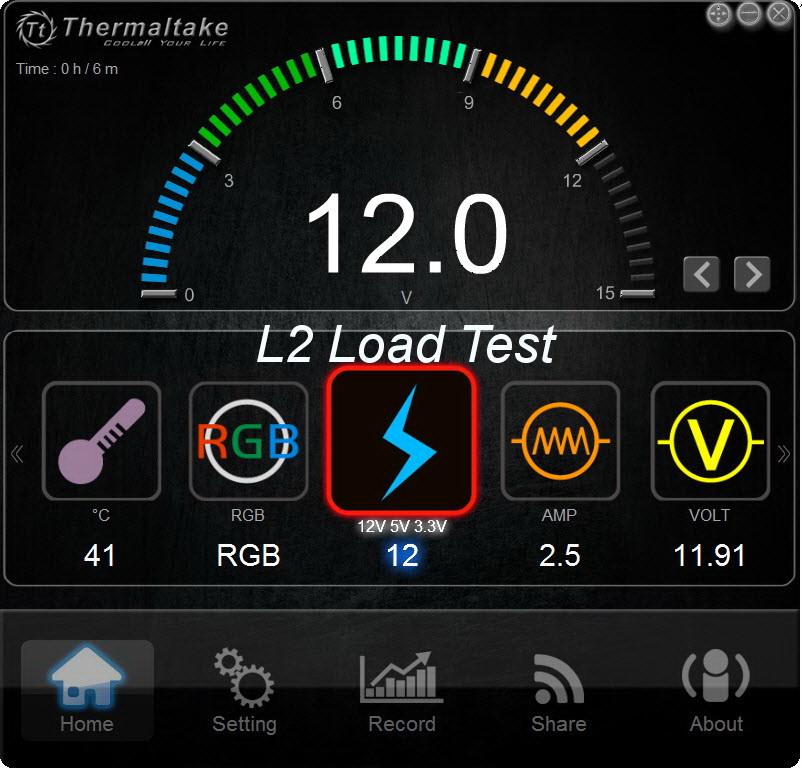
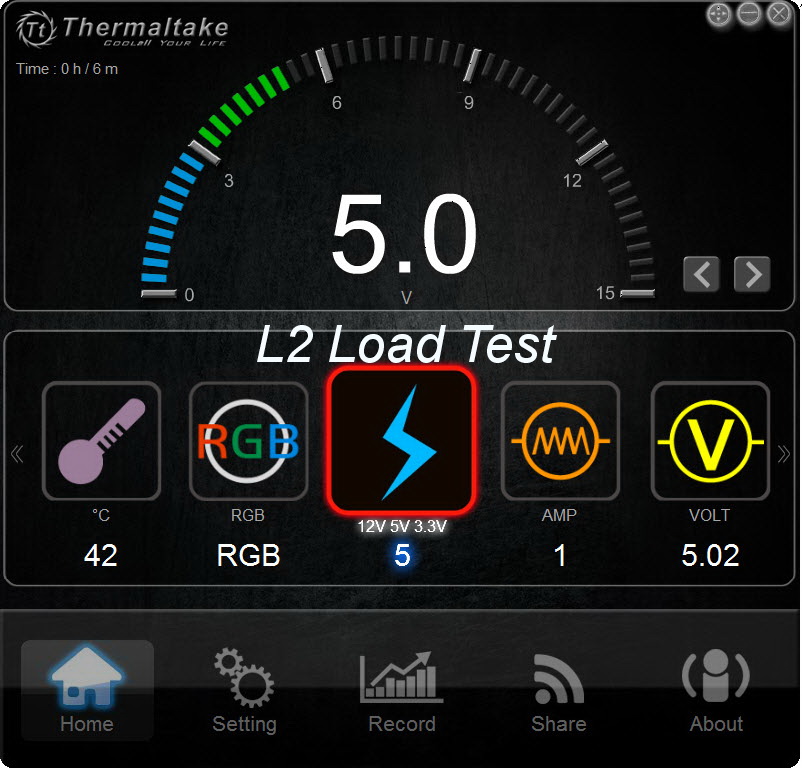
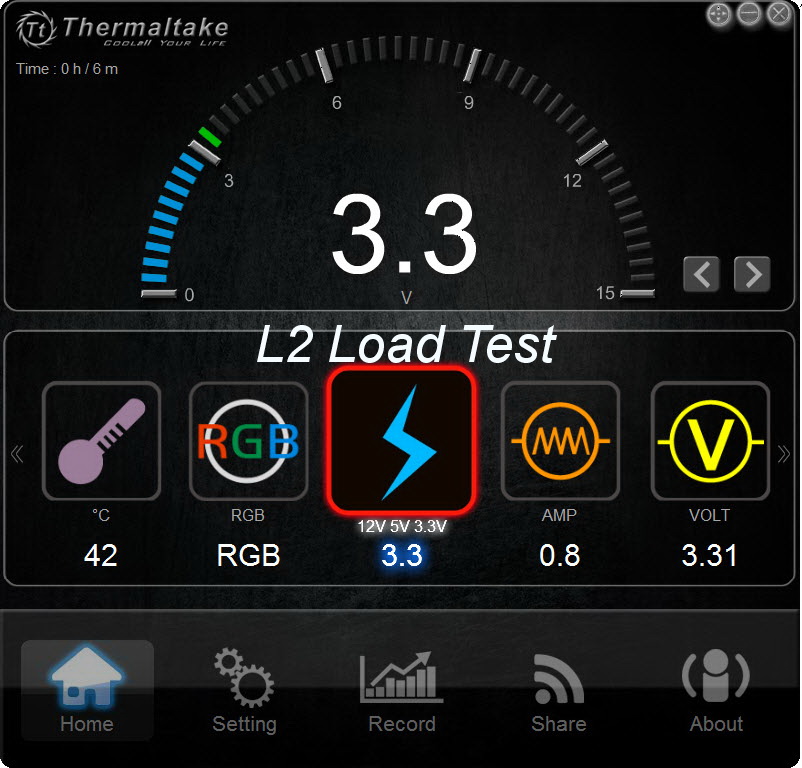
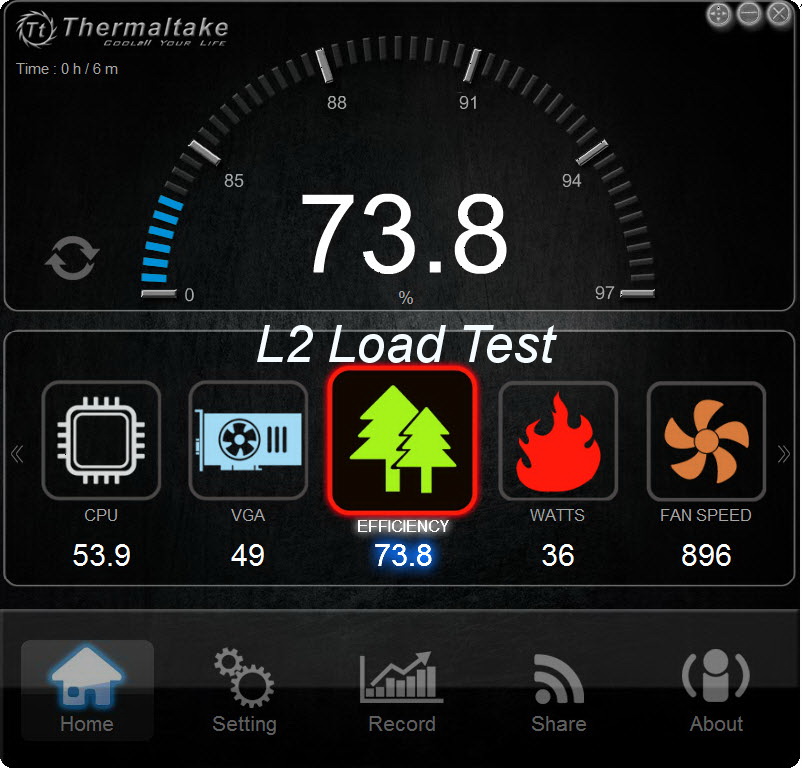
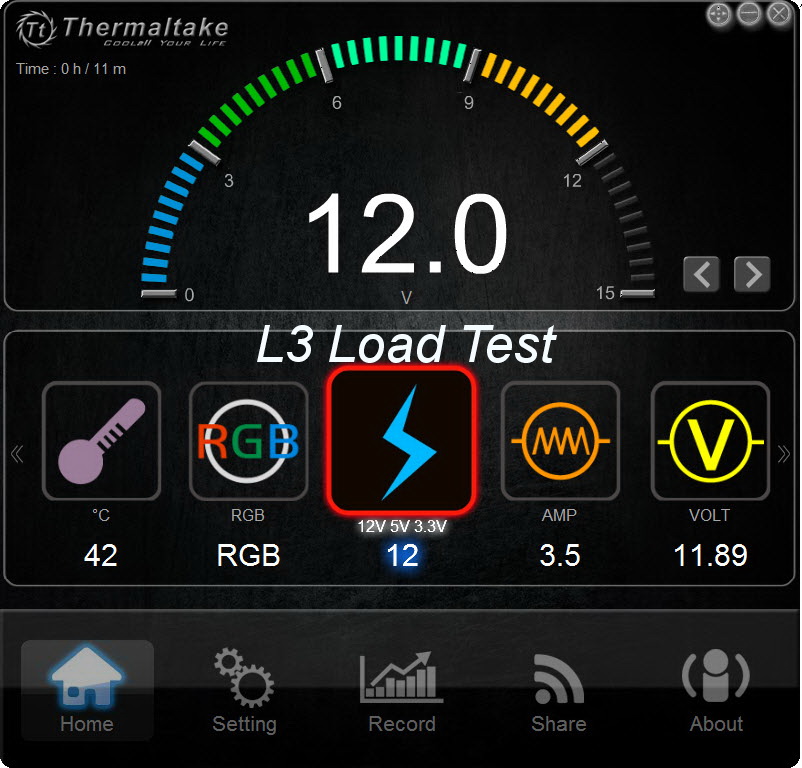
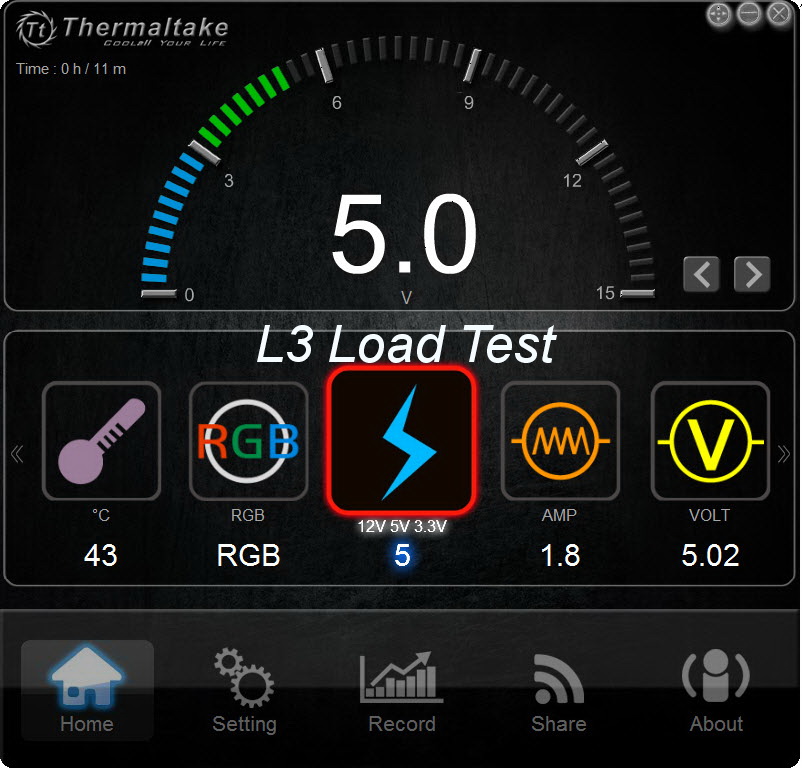
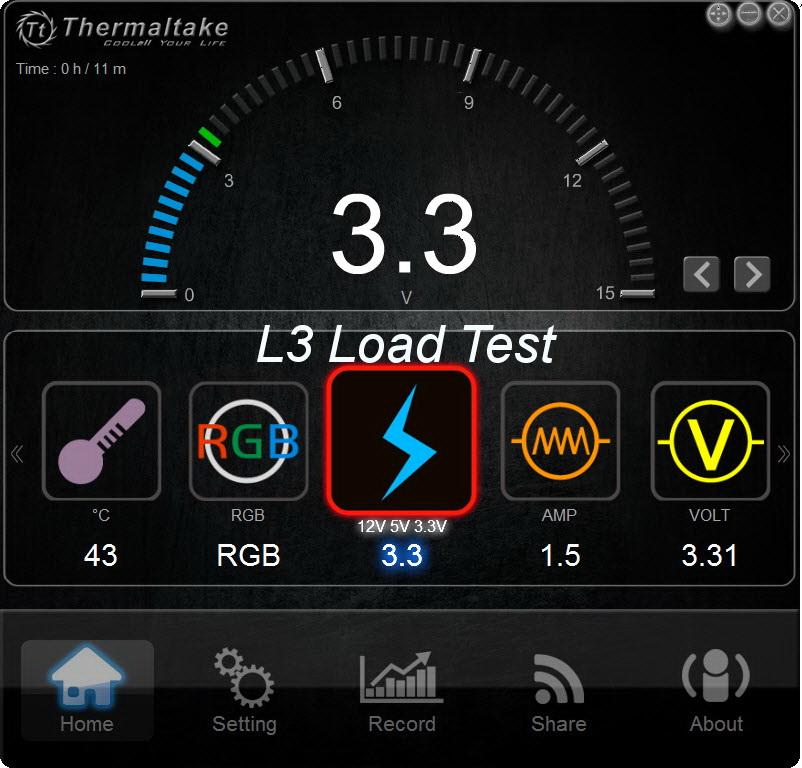
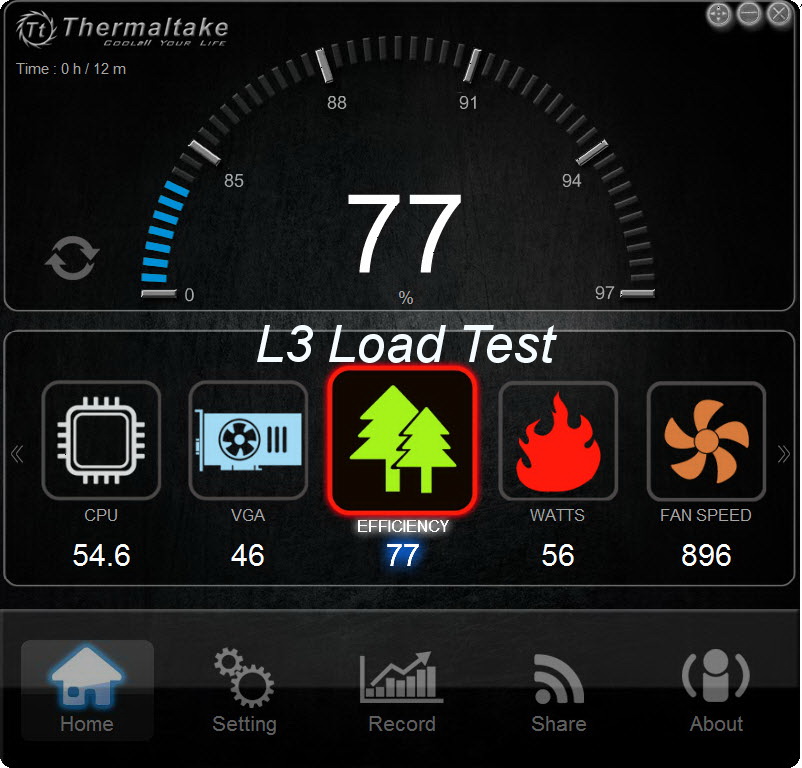
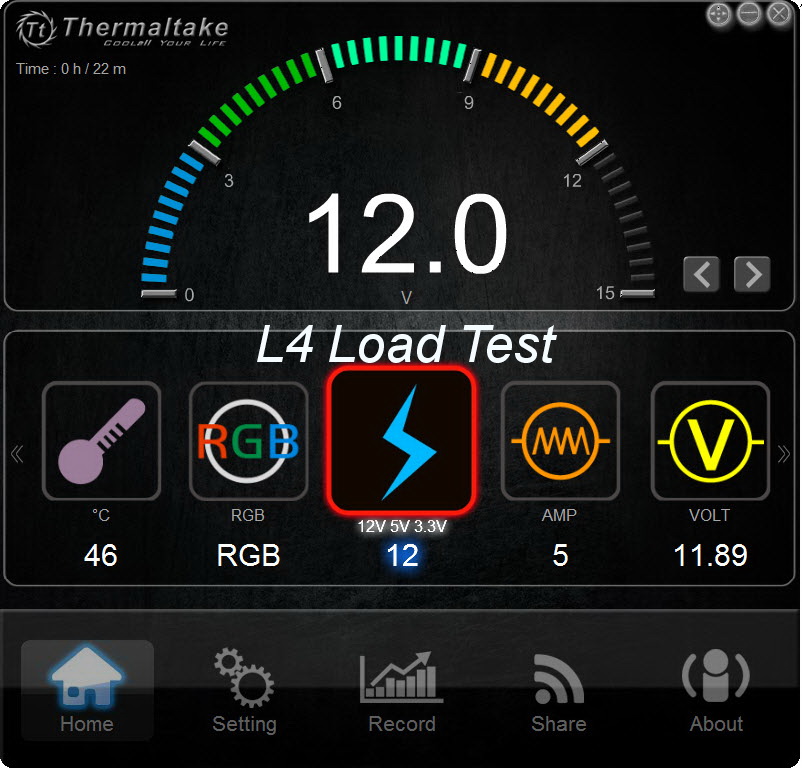
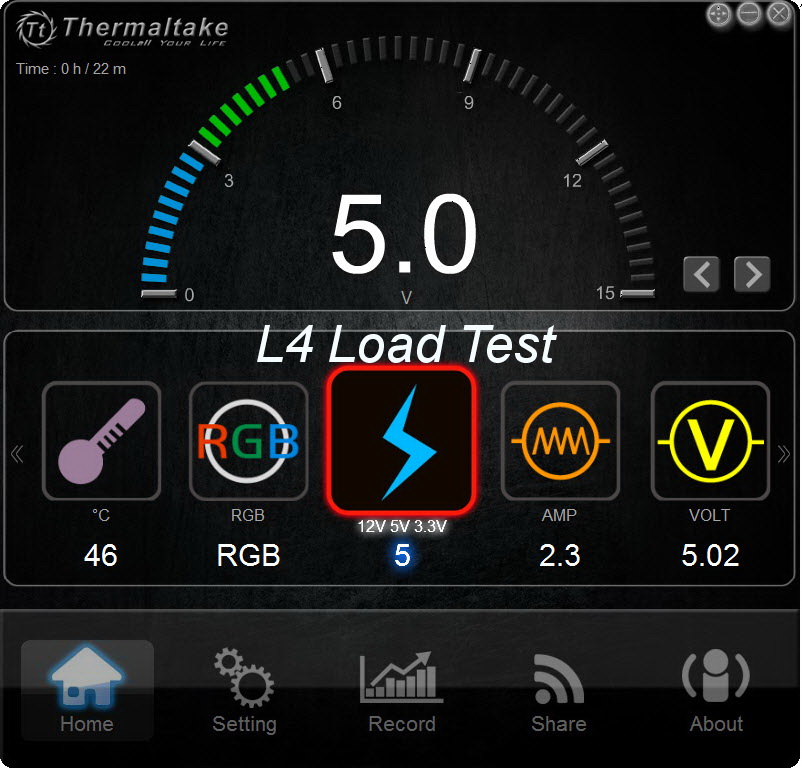
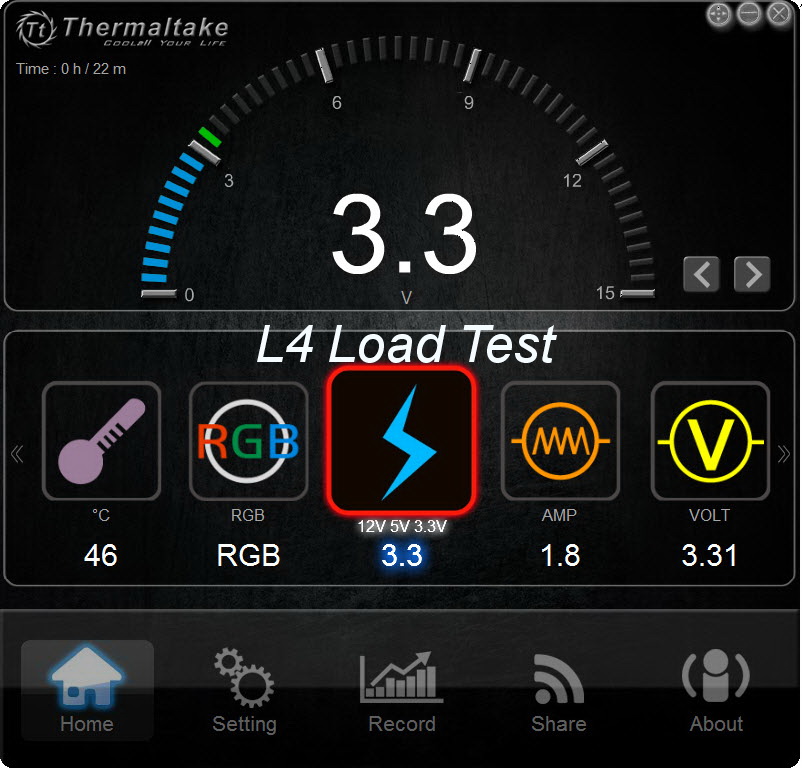

The efficiency readings with 40 and 80 W loads are accurate. But in the 20 W test, the PSU's MCU wasn't able to calculate efficiency, while under 80 W load, the reading is inaccurate.
Get Tom's Hardware's best news and in-depth reviews, straight to your inbox.
5VSB Efficiency
The ATX specification states that 5VSB standby supply efficiency should be as high as possible, recommending 50 percent or higher efficiency with 100 mA of load, 60 percent or higher with 250 mA of load, and 70 percent or higher with 1 A or more of load.
We take four measurements: one each at 100, 250 and 1000 mA, and one with the full load the 5VSB rail can handle.
| Test # | 5VSB | DC/AC (Watts) | Efficiency | PF/AC Volts |
|---|---|---|---|---|
| 1 | 0.101A | 0.50 | 72.46% | 0.033 |
| 4.927V | 0.69 | 115.2V | ||
| 2 | 0.251A | 1.24 | 73.37% | 0.079 |
| 4.923V | 1.69 | 115.2V | ||
| 3 | 1.002A | 4.92 | 83.39% | 0.235 |
| 4.908V | 5.90 | 115.2V | ||
| 4 | 3.002A | 14.57 | 80.90% | 0.435 |
| 4.855V | 18.01 | 115.2V |
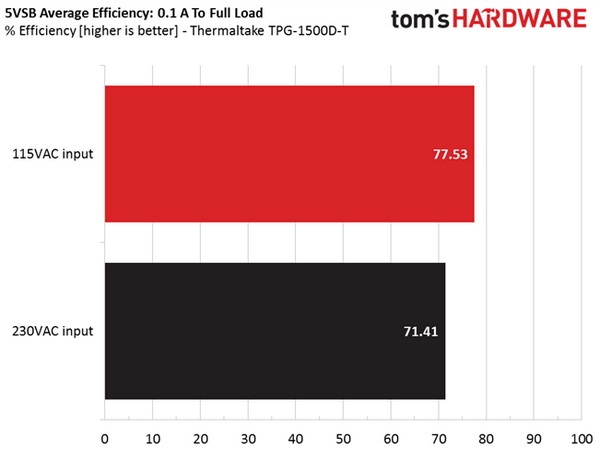
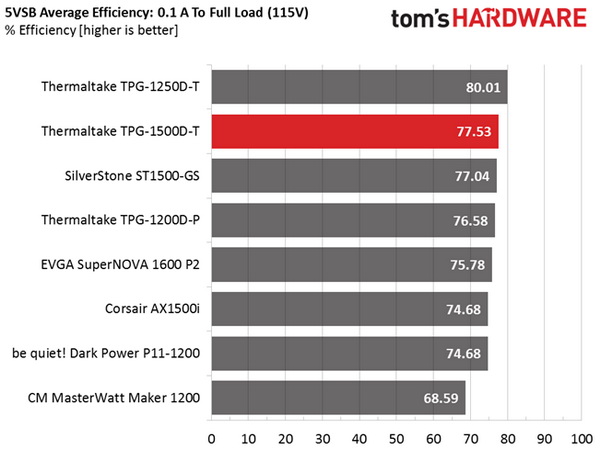
The 5VSB rail is highly efficient, exceeding 83% during the third test. This is something that we don't see everyday.
Power Consumption In Idle And Standby
In the table below, you'll find the power consumption and voltage values of all rails (except -12V) when the PSU is idle (powered on, but without any load on its rails), and the power consumption when the PSU is in standby mode (without any load, at 5VSB).
| Mode | 12V | 5V | 3.3V | 5VSB | Watts | PF/AC Volts |
|---|---|---|---|---|---|---|
| Idle | 12.064V | 5.037V | 3.361V | 5.037V | 6.73 | 0.283 |
| 115.2V | ||||||
| Standby | 0.07 | 0.003 | ||||
| 115.2V |
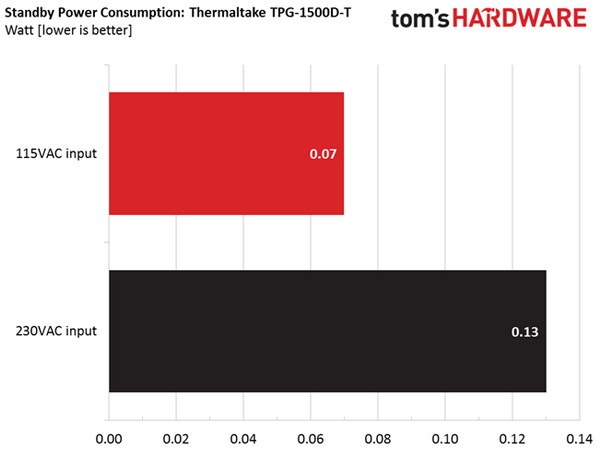
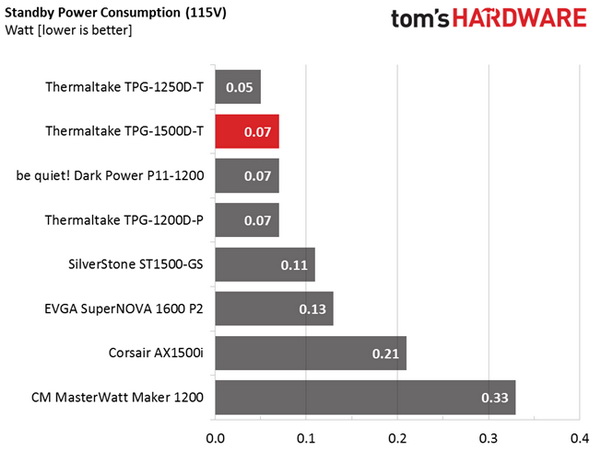
Phantom power is kept at very low levels.
Fan RPM, Delta Temperature And Output Noise
Our mixed noise testing is described in detailhere.
The first chart below illustrates the cooling fan's speed (in RPM), and the delta between input and output temperature. The results were obtained at 38 °C (100.4 °F) to 49 °C (120.2 °F) ambient temperature.
The next chart shows the cooling fan's speed (again, in RPM) and output noise. We measured acoustics from one meter away, inside a small, custom-made anechoic chamber with internals completely covered in sound-proofing material (be quiet! Noise Absorber kit). Background noise inside the chamber was below 18 dB(A) during testing, and the results were obtained with the PSU operating at 38 °C (100.4 °F) to 49 °C (120.2 °F) ambient temperature.
The following graph illustrates the fan's noise over the PSU's operating range. The same conditions of the above graph apply to our measurements, though the ambient temperature was between at 28 °C (82.4 °F) to 30 °C (86 °F).
As you can see, the massive mode doesn't last long. Fortunately, the PSU is quiet enough up to around 770 W load. Higher than 800 W, the fan's speed increases quickly, and with more than 1.1 kW you need ear plugs.
The last graph illustrates the fan's speed over the PSU's operating range. The same conditions of the above graph apply to our measurements.
The PSU features a flexible fan profile. We would prefer a more relaxed ramp overall, though.
Current page: Efficiency, Temperature And Noise
Prev Page Load Regulation, Hold-Up Time, And Inrush Current Next Page Protection Features
Aris Mpitziopoulos is a contributing editor at Tom's Hardware, covering PSUs.
-
spat55 So basically a poor performing PSU at this price point and the only good thing is a RGB fan I won't see because my PSU is always face down and preferably under a PSU cover, okay got it.Reply -
g-unit1111 What's the point of having an RGB ring on a bottom mounted PSU where nobody will see the fan anyways? :??:Reply
Also those cables - the word "eyesore" comes to mind! I would be replacing those with some custom ones ASAP! :ouch: -
spat55 Reply18628558 said:What's the point of having an RGB ring on a bottom mounted PSU where nobody will see the fan anyways? :??:
Also those cables - the word "eyesore" comes to mind! I would be replacing those with some custom ones ASAP! :ouch:
Yeah it's just a crap unit which is hoping the kids orgasm over those RGB lighting, it's doing my head in but I'm sure it'll soon become mainstream then die. -
powernod Extremely dissapointed by Thermaltake.Reply
Only at the TPG-1250D-T they used the new & excellent CST platform by CWT.
For all the other wattage models so far, ( 850 & 1500watt ) they used mediocre platforms by Enhance.
I had high expectations for Tt's new line of PSUs, but they were proven futile. -
Virtual_Singularity Thanks for another thorough, excellent, psu review, great job Aris. Disappointed by TT, as well. That is one flawed, less than mediocre (esp for the price) unit, OEM'd to Enhance by another predictable 3rd party company. Some pretty lights on the fan and it's 1600 watt helm of their "flagship" series moniker is supposed to justify that $430 pricetag? Fails to meet minimum atx specs in several areas, hold up time for such an expensive unit is also unacceptable. Similar to the MasterWatt Maker, it can't hope to compete with similar units from their competitors, which are lower in price, better in efficiency and overall specs.Reply -
Nuckles_56 The 12V CL1 was certainly one of the more interesting waveforms I've seen in a while. But overall I'm pretty disappointed in Thermaltake for producing such a over priced under performing PSUReply -
Br1414 Typo? 16 amps is the max legal load on a 20 amp 120v plug, thus option A apparently. Option B appears to be the old wall A/C style 20 amp 240 volt plug. Both a t slot styles. So maybe you rig something, but more or less you need an electrician just to use this thing safely! I guess you got the money...Reply -
Valantar Individually sleeved cables in the traditional "ketchup and mustard" colours? Wow, that made me laugh. Out loud. Might be suitable to some kind of early 2000s retro theme build?Reply
Also, I love the pixelated 8-bit-ish thing you've got going on with the ripple graphs on page 9. Perhaps
Otherwise, this was pretty much as expected. A useless product (the world does not need more 1000W+ PSUs), with useless features (RGB in a place where it'll be invisible in 90+% of modern cases), at a useless price point. That it performs badly as well just adds icing to the turd.
